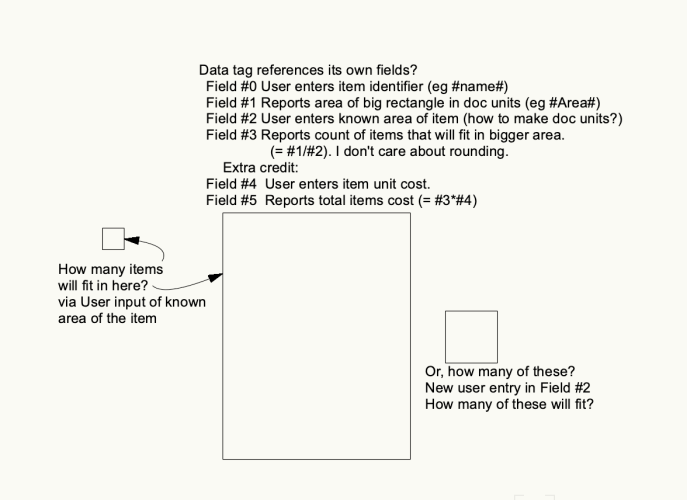Search the Community
Showing results for tags 'math'.
-
With only limited experience, trying to bend a data tag to my will. Goal is to multiply or divide value in a calculated field by the value in a User Entered field elsewhere in the same data tag. Associated objects are just basic polygons with no record formats. Is this possible? The "items" in attached image do not need to be present in the drawing. I just input an area value of my choice in Field #2 of the Data Tag. Any comment welcome. -B
-



